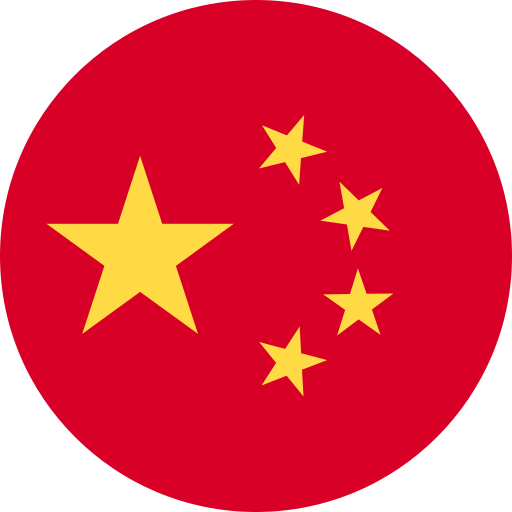Key Takeaways
- Distinct Dialects: Shanghainese, part of the Wu language group, differs significantly from Mandarin Chinese in phonetics, grammar, and vocabulary.
- Phonetic Variations: Shanghainese features five main tones compared to Mandarin’s four, influencing pronunciation and meaning.
- Simplified Grammar: Sentence structures in Shanghainese are often simpler than those in Mandarin, frequently omitting subject pronouns and allowing more flexible verb placement.
- Cultural Reflection: Vocabulary in Shanghainese incorporates unique local terms and borrowed influences that reflect Shanghai’s rich cultural history.
- Historical Influences: The development of both dialects has been shaped by social interactions and historical contexts, highlighting their unique linguistic identities.
- Enhanced Communication Insight: Understanding these differences fosters a greater appreciation for the nuances of both languages and enriches communication experiences across China.
Ever wondered how Shanghainese stacks up against Mandarin Chinese? You’re not alone. With over a billion speakers, the Chinese language is incredibly diverse, and Shanghainese offers a fascinating glimpse into this rich tapestry.
Overview of Shanghainese and Chinese
Shanghainese, a dialect within the Wu language group, showcases unique linguistic features distinct from Mandarin Chinese. While Mandarin serves as the official language in China, spoken by over a billion people, Shanghainese is primarily used in Shanghai and its surrounding regions. This geographical specificity contributes to its rich cultural context.
Phonetic differences stand out prominently between these languages. Shanghainese employs fewer tones than Mandarin; it has five main tones compared to Mandarin’s four. This tonal variation affects pronunciation and meaning significantly. For instance, certain words may sound similar but convey different ideas based on tone alone.
Grammar also diverges between Shanghainese and Mandarin. In Shanghainese, sentence structures often simplify compared to the more complex grammar rules found in Mandarin. The use of particles differs too; for example, Shanghainese frequently drops subject pronouns that are essential in Mandarin sentences.
Vocabulary reflects local culture and lifestyle variations as well. Many terms in Shanghainese derive from historical influences unique to Shanghai, while Mandarin vocabulary leans towards standardization across various regions of China.
Understanding these distinctions enhances your appreciation for both languages’ nuances and intricacies. Whether you’re exploring voiceover projects or simply interested in linguistic diversity, recognizing how each dialect functions provides valuable insight into China’s vibrant communication landscape.
Historical Context
Shanghainese and Mandarin Chinese reflect a rich historical tapestry that shapes their unique characteristics. Understanding this context helps illuminate the linguistic differences between these two languages.
Development of Shanghainese
Shanghainese, part of the Wu language group, developed in Shanghai over centuries. Its roots trace back to ancient dialects spoken in the region before Shanghai became a major city. As trade flourished in the 19th century, English and other foreign influences seeped into local speech patterns, enriching its vocabulary and phonetics. These interactions forged a distinct identity for Shanghainese, setting it apart from Mandarin while still maintaining some similarities due to shared ancestry.
Evolution of Chinese Languages
The evolution of Chinese languages is complex and multifaceted. Over millennia, various dialects emerged across regions, influenced by migration patterns and cultural exchanges. While Mandarin rose to prominence as China’s official language in the early 20th century, regional dialects like Shanghainese retained their unique features. This divergence illustrates how languages adapt within different sociocultural contexts, revealing not only linguistic but also historical narratives that reflect local identities and traditions.
Phonetic Differences
Phonetic differences between Shanghainese and Mandarin are striking. These variations influence how speakers articulate sounds and convey meaning.
Vowel and Consonant Variations
Shanghainese features distinct vowel and consonant sounds compared to Mandarin. For instance, it contains vowels that aren’t present in Mandarin. The pronunciation of certain consonants, like the “zh,” “ch,” and “sh” sounds, varies significantly as well. In Shanghainese, you may notice a tendency toward softer pronunciations, which can change the overall tone of conversations. Additionally, some syllables might merge or drop entirely in everyday speech, creating a more fluid dialogue unique to the region.
Tone Systems in Shanghainese and Chinese
Tone systems play a crucial role in both languages but differ notably between them. While Mandarin relies on four primary tones to distinguish meaning, Shanghainese utilizes five main tones with additional sub-tones for nuance. This tonal complexity allows Shanghainese speakers to express subtle distinctions that might be lost in Mandarin. The tonal shifts can drastically alter meanings of words based solely on their pitch patterns; hence understanding these tones is vital for effective communication within each dialect’s context.
These phonetic characteristics highlight not just linguistic diversity but cultural richness as well—each sound reflects local identity and heritage within the broader tapestry of Chinese language evolution.
Lexical Comparisons
Lexical comparisons between Shanghainese and Mandarin Chinese reveal significant differences in vocabulary and expressions. These distinctions highlight the rich cultural tapestry of the region.
Vocabulary Distinctions
Shanghainese incorporates many local terms that reflect its unique history and culture, which often aren’t found in Mandarin. For instance, everyday objects might have entirely different names. A common example is “xie” (鞋) for shoes; while this term exists in both languages, Shanghainese might use a regional variant that locals recognize instantly. This divergence enriches daily communication but can pose challenges for Mandarin speakers attempting to engage with Shanghainese.
Moreover, certain phrases or idiomatic expressions carry specific meanings in Shanghainese that don’t translate directly into Mandarin. Understanding these can enhance your appreciation of the dialect’s charm and uniqueness.
Borrowed Words and Influences
Both languages absorbed influences from various cultures over time, yet the impact on their vocabularies differs notably. Shanghainese features numerous borrowed words from English, Portuguese, French, and Japanese due to historical trade relationships and foreign settlements. For example, you might hear “kafei” (咖啡) used widely among locals to refer to coffee—showcasing how global interactions shaped its lexicon.
Mandarin also includes loanwords but tends toward standardization across regions given its status as China’s official language. In contrast, Shanghainese retains a more localized flavor through these borrowed terms—giving it a distinct identity within the broader linguistic landscape of China.
Understanding these lexical differences not only enhances your knowledge of language variations but also offers insight into cultural dynamics at play within Shanghai and beyond.
Grammatical Divergences
Grammatical differences between Shanghainese and Mandarin Chinese highlight the unique characteristics of each language. These divergences shape how speakers construct sentences and convey meaning.
Sentence Structure
Shanghainese often simplifies sentence structures compared to Mandarin. In many cases, it drops subject pronouns that are necessary in Mandarin. For example, in Shanghainese, you might say “去商店” (go store) instead of “我去商店” (I go to the store). This simplification leads to a more fluid conversation style, allowing speakers to communicate efficiently while maintaining clarity.
Additionally, verb placement can differ significantly. In Shanghainese, verbs may appear at the end of a sentence or phrase more frequently than in Mandarin. This flexibility gives Shanghainese speakers an opportunity to express nuances in their thoughts without adhering strictly to Mandarin’s structured format.
Use of Particles
Particles play a crucial role in both languages but serve different functions within them. Shanghainese frequently employs particles that add emotional or contextual layers to statements. For instance, the particle “啦” adds emphasis or urgency, altering the tone without changing the core meaning of a phrase.
Mandarin also uses particles like “了” and “吗,” primarily for indicating completed actions or forming questions respectively. The use of these grammatical tools differs not only in frequency but also in impact on speech flow and interaction style within respective communities.
Understanding these grammatical divergences enhances your grasp of each dialect’s unique qualities and enriches communication experiences across different regions in China.
Cultural Impacts on Language
Cultural influences shape the nuances of both Shanghainese and Mandarin. Shanghai’s vibrant history, marked by trade and foreign interactions, contributes to the distinctiveness of its dialect. Shanghainese reflects local customs, traditions, and social dynamics through its vocabulary and expressions.
Shanghainese incorporates unique terms that resonate with the region’s cultural identity. For instance, words related to local cuisine or traditional festivals often don’t have direct equivalents in Mandarin. This linguistic richness highlights how language serves as a vessel for cultural heritage.
Mandarin, as the official language, standardizes communication across China. However, it also absorbs regional elements from various dialects like Shanghainese. Certain phrases or expressions may emerge in Mandarin influenced by local customs when speakers interact in diverse settings.
The historical context plays a significant role too. The influx of foreign cultures during the 19th century introduced new vocabulary into Shanghainese from languages such as English and French. These borrowed terms not only enrich the lexicon but also reflect Shanghai’s cosmopolitan nature.
Language is more than mere words; it embodies the spirit of a community. Understanding these cultural impacts enhances appreciation for both Shanghainese and Mandarin, revealing deeper connections between language and identity within this dynamic landscape.
Conclusion
Exploring the linguistic differences between Shanghainese and Mandarin enriches your understanding of China’s diverse language landscape. Each dialect offers a unique window into the culture and history of its speakers. The phonetic, grammatical, and lexical variations reflect not only communication styles but also local identities shaped by centuries of evolution.
As you delve deeper into these languages, you’ll appreciate how they embody the spirit of their communities. Understanding Shanghainese alongside Mandarin allows for a more nuanced perspective on cultural dynamics in Shanghai and beyond. Embracing this diversity enhances your connection to China’s vibrant heritage while fostering better cross-cultural communication.
Frequently Asked Questions
What is the main difference between Shanghainese and Mandarin?
Shanghainese is a dialect within the Wu language group, distinct from Mandarin, which is the official language of China. While Mandarin has four tones, Shanghainese features five main tones that influence pronunciation and meaning. Additionally, Shanghainese often uses simplified grammar and unique vocabulary reflective of its cultural context.
How many tones are in Shanghainese compared to Mandarin?
Shanghainese employs five main tones, whereas Mandarin Chinese has four. This tonal difference significantly affects pronunciation and meaning in both languages.
Why is understanding phonetic differences important?
Understanding phonetic differences helps with effective communication. In Shanghainese, certain consonants have softer pronunciations and some syllables may merge or drop in everyday speech, creating nuances that could lead to misunderstandings if not recognized.
How does grammar differ between Shanghainese and Mandarin?
Shanghainese often simplifies sentence structures by dropping subject pronouns essential in Mandarin. For example, one might say “去商店” (go store) instead of “我去商店” (I go to the store), resulting in a more fluid conversation style.
What historical influences shaped the development of Shanghainese?
Shanghainese evolved over centuries from ancient dialects influenced by trade and foreign interactions during the 19th century. These exchanges enriched its vocabulary and phonetics while allowing it to retain unique characteristics despite Mandarin’s standardization as an official language.
Are there significant lexical differences between both languages?
Yes, there are notable lexical differences; Shanghainese incorporates local terms reflecting its culture and history. Some phrases or expressions carry specific meanings that do not translate directly into Mandarin, showcasing its regional charm.
How do cultural impacts affect language use in Shanghai?
Cultural dynamics deeply influence language use in Shanghai. Local customs, cuisine-related terms, and festival expressions enrich Shanghainese vocabulary while reflecting the region’s vibrant history marked by trade and foreign interactions.
What role does globalization play in shaping these dialects?
Globalization has led to linguistic borrowing; for instance, Shanghainese includes many words from English, Portuguese, French, and Japanese due to historical trade relationships. In contrast, Mandarin tends toward standardization across regions but also absorbs elements from local dialects like Shanghainese.







